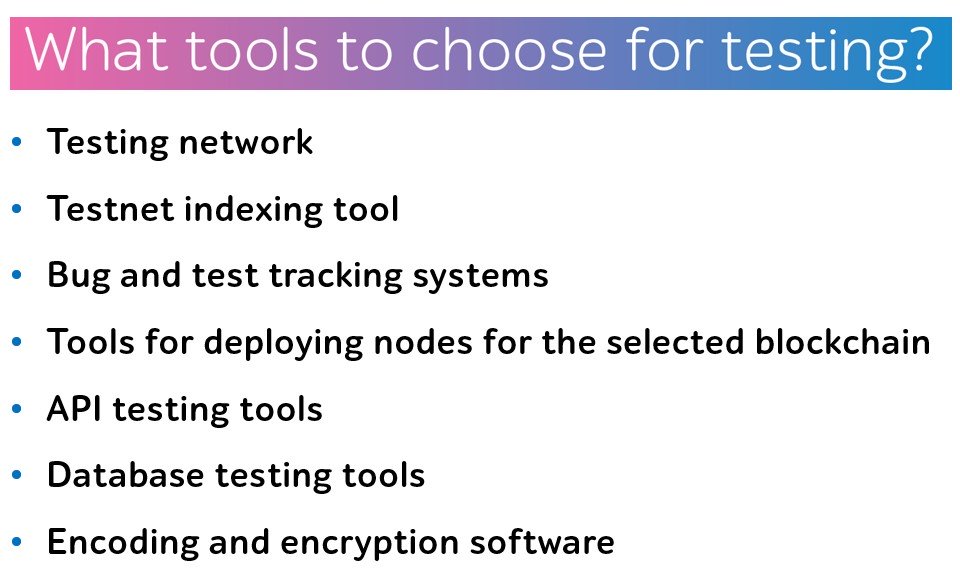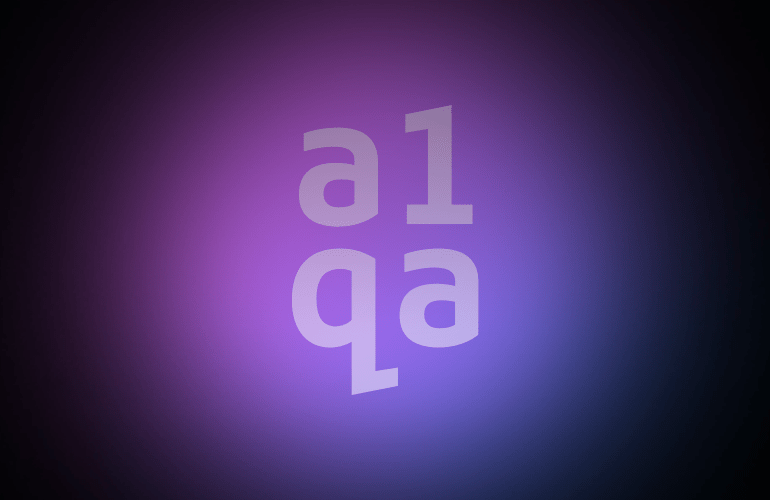
How to ensure the quality of smart contracts in decentralized applications
The world of blockchain and cryptocurrency is associated with decentralization.
Decentralization eliminates the need of one authority and ensures the privacy of information and security as nobody fully owns the system. What makes it work is cryptography – a method of using digital signatures in a form so that only those network members, who should get access to some piece of data, will get it.
The possibilities of blockchain application are endless – and this is where decentralized apps come into play.
Before we dive into testing specifics, let’s quickly go over some important terminology.
- A smart contract is a small piece of code that codifies some business logic and is executed on blockchain in a decentralized manner. Their main functions are to store rules, facilitate rules, and self-execute rules.
Smart contracts help gain autonomy and independence from third-party structures and have other advantages like reliability, security, accuracy, and profitability.
- A decentralized application (DApp) is the application that is run on a peer-to-peer network of computers and doesn’t depend on a central computer to send or get information. Decentralized apps use the power of blockchain and smart contracts to enforce the agreement between the parties.
Today, the most popular way to run a dApp is to install it on a blockchain platform (for example, on Ethereum).
And the world of business eagerly embraces smart contracts and dApps. We see now and will see in the nearest future numerous applications in IoT, financial sector, etc. The prime examples include games, DEX (Decentralized Exchange), NFT marketplaces, gambling, blockchain-powered social networks, DeFi (Decentralized Finance).
Now let’s focus on how to test smart contracts and how to ensure high quality of decentralized applications.
Why is it important to test smart contracts?
Due to the immutable nature of blockchain, if any errors are found, a new contract should be created because you cannot change the code of the blockchain-based contract.
Even a minor logic error in the application can lead to serious damages and costs.
For example, a couple of years ago, Parity Ethereum MultiSig wallets were blocked due to smart contracts vulnerabilities. Could the blockage have been avoided? Yes. By means of thorough testing.
What to test in a smart contract?
Testing is the best way for using the contract in different situations without any risk to make sure it’s working properly.
Here are the aspects of the smart contract that a professional QA team should take into consideration:
- Digital signature process
- Contract code and its changes fixation
- Subject of the contract
- Tools that are necessary for the contract execution
- The terms of execution in the contract code
- Events
- Errors and sending messages
- Changes made in the status of contracts and their balance
How to test a smart contract?
It is necessary to simulate, consider, and predict all possible conditions in the logic of each particular contract:
- what events should be initiated
- what techniques should be fulfilled
- how the status and balance of the contract are changing
- to whom and how to transfer funds
- what error to cause
- check the author of the message and the correct use of the current time.
For example, when executing a smart contract in Ethereum, it is important to take into account the limitation and spending of the Gas value – the cost of a smart contract that Ethereum has set for its launch.
All this is closely related to the security of the agreements. The situation when means are “stuck” in the contract differs just a little from the situation when they are stolen.
Otherwise, the general principle is similar to testing any other code: a set of reference method calls is created in a predefined environment, for the results of which the expected results are written.
How to make software testing process more effective?
In the case of smart contracts, the most accurate solution would be to conduct automated testing, especially considering a large number of validations during contract processing, rapid growth, and network transformation, the presence of multiple nodes and their various combinations.
Often for defect-free work, BDD (Behavior-Driven Development) practices are used, which allows creating documentation and examples along with tests. We have talked more about BDD here.
The elements of dApp
Let’s move on to testing of decentralized applications.
Any application consists of the back-end and front-end. The back-end of a decentralized application has its own internal code that is run on the blockchain.
DApp also consists of an intermediate – a browser (for example, Toshi) or extensions for it (like MetaMask). Front-end can be written in any programming language.
Testing a dApp
Although blockchain applications are still an innovative industry, many methods applied for testing other products are also suitable for dApp checks.
Apparently, there is no difference between a dApp and any other application. Many users do not even know that they have an application where the back-end is a blockchain.
In our previous article, we have discussed the characteristics of functional, security, and load testing that help improve the quality of blockchain-based products.
In addition, other testing types should be carried out:
- Smart contracts testing
- Transaction testing
This type of testing includes checking the number of operations performed, service fields, hash validity, time of the transaction, data about the author and recipient, and many more.
- End-to-end testing
This type of testing is performed to ensure the quality of all the functionality of the application and verify that all dApp parts work as intended. As a rule, end-to-end checks try to predict the behavior of a real user and how he/she will interact with the system.
- Integration testing
QA engineers will check the interaction of modules and systems as a whole and the integration of data that reaches the back-end from the front-end.

Read more about the tools to test blockchain-based apps in our previous article.
On a final note
Getting rid of centralization has become a dominant trend and has greatly changed workflows in many industries. First-gen P2P networks, DAO, and other dApps, smart contracts, EOS (decentralized OS) are just beginning to gain momentum and determine what the Internet will be like in the future.
Early software testing can help business successfully take advantage of seamless blockchain technology, solve longstanding problems, and take their place in the competitive market.
No doubt, blockchain is a powerful technology. But not being tested properly, it can cause troubles you may not think about.
Get a free consultation with a1qa blockchain experts and find out how our QA solutions can help improve the quality of your software product.




